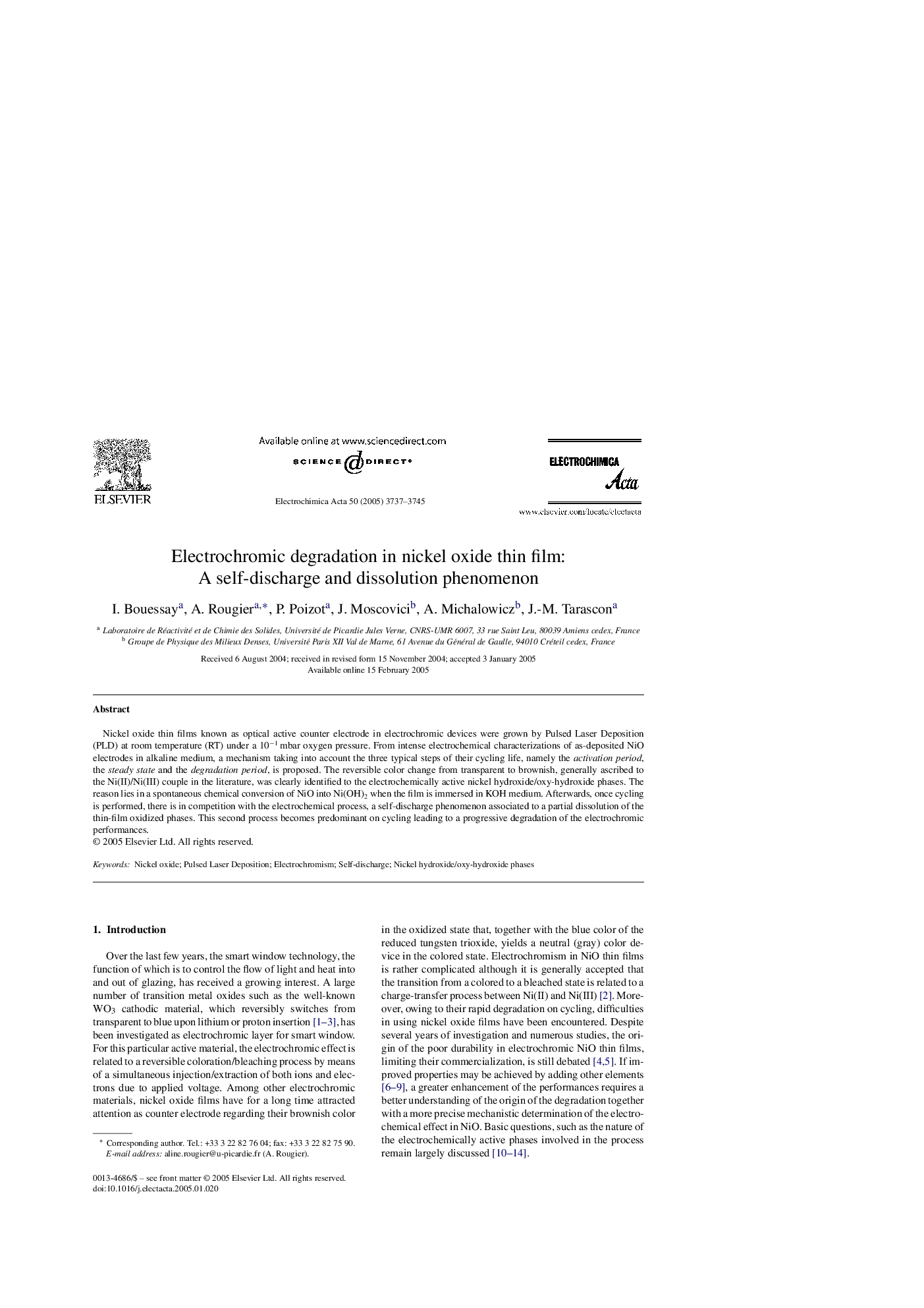| کد مقاله | کد نشریه | سال انتشار | مقاله انگلیسی | نسخه تمام متن |
|---|---|---|---|---|
| 196968 | 459864 | 2005 | 9 صفحه PDF | دانلود رایگان |

Nickel oxide thin films known as optical active counter electrode in electrochromic devices were grown by Pulsed Laser Deposition (PLD) at room temperature (RT) under a 10−1 mbar oxygen pressure. From intense electrochemical characterizations of as-deposited NiO electrodes in alkaline medium, a mechanism taking into account the three typical steps of their cycling life, namely the activation period, the steady state and the degradation period, is proposed. The reversible color change from transparent to brownish, generally ascribed to the Ni(II)/Ni(III) couple in the literature, was clearly identified to the electrochemically active nickel hydroxide/oxy-hydroxide phases. The reason lies in a spontaneous chemical conversion of NiO into Ni(OH)2 when the film is immersed in KOH medium. Afterwards, once cycling is performed, there is in competition with the electrochemical process, a self-discharge phenomenon associated to a partial dissolution of the thin-film oxidized phases. This second process becomes predominant on cycling leading to a progressive degradation of the electrochromic performances.
Journal: Electrochimica Acta - Volume 50, Issue 18, 10 June 2005, Pages 3737–3745